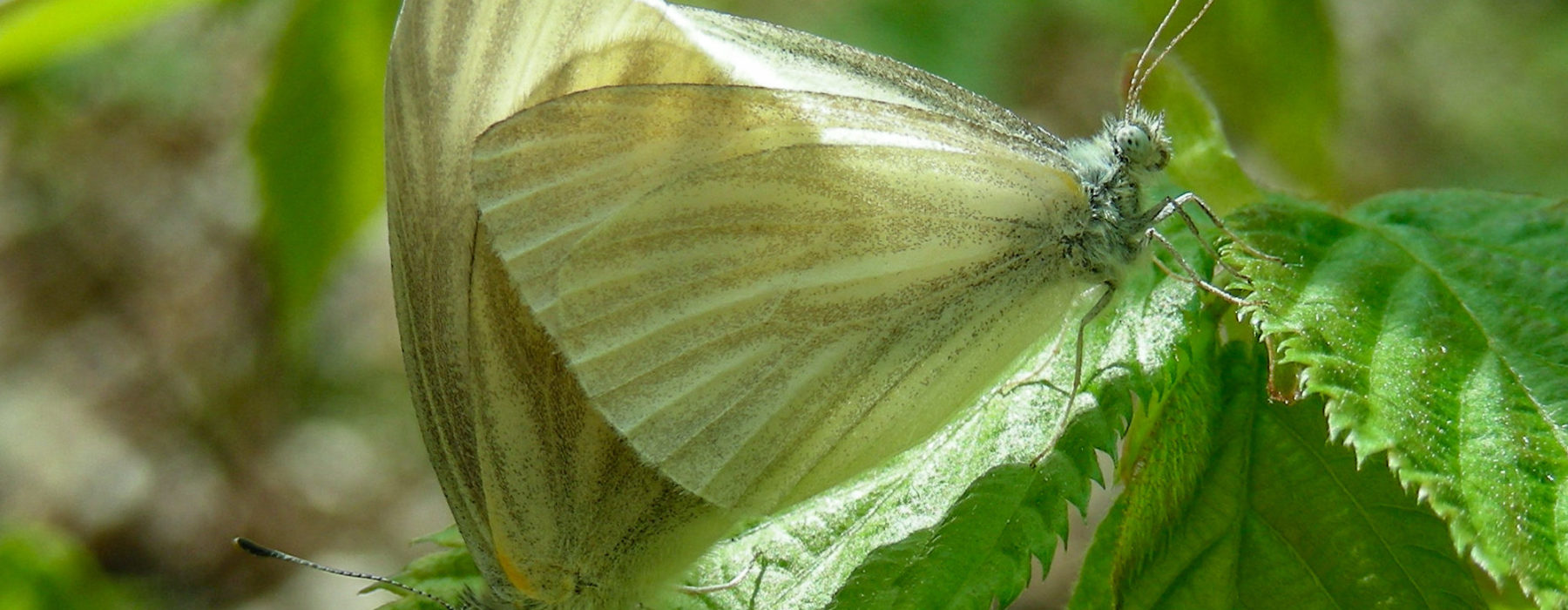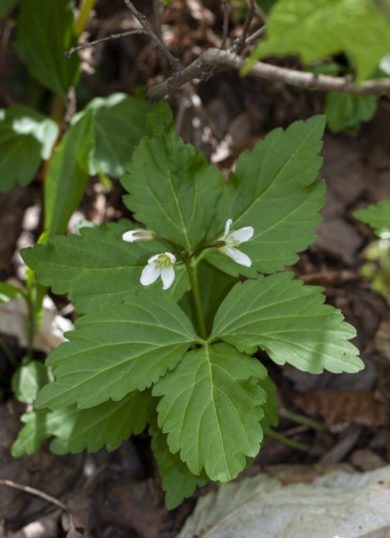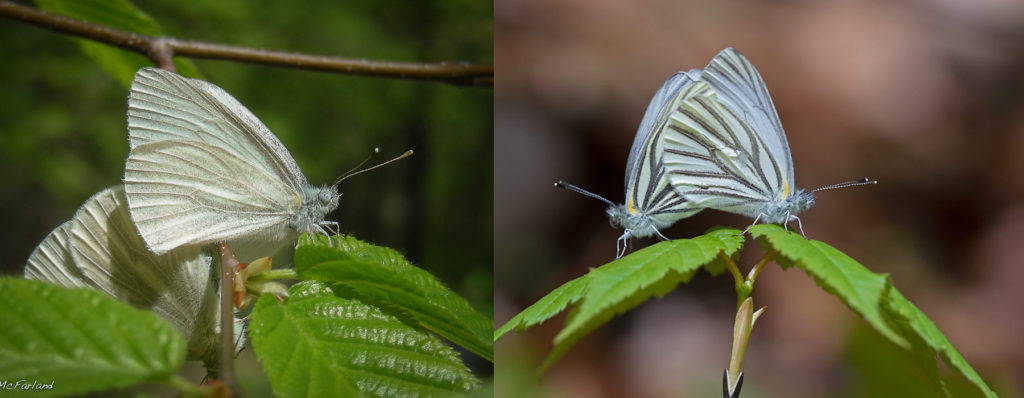Spring is changing. The snow is melting earlier, wildflowers are blooming sooner, and trees are leafing out faster. How are West Virginia White butterflies faring? Butterfly watchers joined us this spring on our West Virginia White Watch, one of the many Vermont Atlas of Life missions, to help us monitor this conservation concern species by submitting checklist surveys to eButterfly.
It’s not a gaudy butterfly. It isn’t the biggest or the smallest. In fact, it’s mostly just white. But the West Virginia White is unusual; it only flies in forests. Its an ephemeral spring wildflower groupie.
To see this butterfly you need to get to rich, mature hardwoods with spring wildflowers early in the season. Our other, more common veined white, the Mustard White, does fly in woods, but it has distinct dark veins in its first brood (when it may be confused with West Virginia White). The West Virginia White always has faint gray scaling along the veins. And, unlike the Mustard White, it only flies early in the season. Their flight is slow and close to the ground. Follow a woodland stream until you find the host plant–and the butterfly. Its caterpillars only feed on Crinkleroot (Cardamine diphylla) and Cut-leaved Toothwort (Cardamine concatenata).
Butterfly watchers contributed 35 checklist surveys to eButterfly for the project this year. Just over half of those surveys found no West Virginia Whites. They were found on counts in Bennington, the stronghold for this species, Rutland, and Franklin counties. A record from a very rich maple sugarbush in Bakersfield, Vermont (Franklin County) extended the known range for this species in Vermont much farther to the northeast than was previously known. Monitoring the annual flight phenology is also important. The earliest record this year was on April 7th (tying the previous record set in 2012) and the latest was on May 25th, both in Bennington County.
Vermont represents the northeastern most edge of its range. It has been listed as a species of special conservation concern in Vermont since 1990. Deforestation and fragmentation of forests into small woodlots in the past probably led to a decline in this species. Colonies apparently disappear easily. Poor spring weather can cause difficulties for adults trying to mate and lay eggs. Survival of caterpillars to the 4th instar is comparable to that of the abundant Cabbage White. However, West Virginia White larvae fall victim to host plant senescence in the 4th and 5th instar and sometimes starve.
The introduction of Garlic-mustard (Alliaria petiolata) to Long Island in 1868 has caused problems too. Females are attracted to Garlic Mustard and lay eggs on it, but young larvae are poisoned by it. Additionally, build up of granulosis virus in the soil in colonies causes premature death of larvae. Once a colony has been extirpated in an isolated woodlot, adults will not recolonize because they will not fly across open areas.
Adults have one short flight period in the spring and the entire life cycle is closely tied to the host plant. Shortly after Toothwort leaves and flower stalks emerge in April, adult West Virginia Whites eclose from winter-diapausing pupae. Mating and oviposition begin within a few days of emergence. Eggs are laid singly on the underside of the leaves and hatch in May when leaf growth has been completed and young larvae will find plentiful food. Caterpillars in 1st to 3rd instar feed on the underside edges of the leaves, while 4th and 5th instars move to the tops of the leaves. Larvae complete their development by the beginning of June, at which time they pupate and enter diapause until the following spring.
June also marks the senescence and withering of Toothwort foliage, leaving no other woodland plant suitable for West Virginia Whites. Although toothwort is a perennial, most of its biomass is underground. Above ground stalks bear relatively small and ephemeral leaves. Larvae frequently defoliate these by 4th and 5th instar at which time they are forced to search for other Toothwort plants.
Thank you to all the volunteers that conducted surveys this year. We hope you will join us next spring for our second annual West Virginia White Watch! Meanwhile, join eButterfly and add all of your butterfly sightings and help us learn more!









